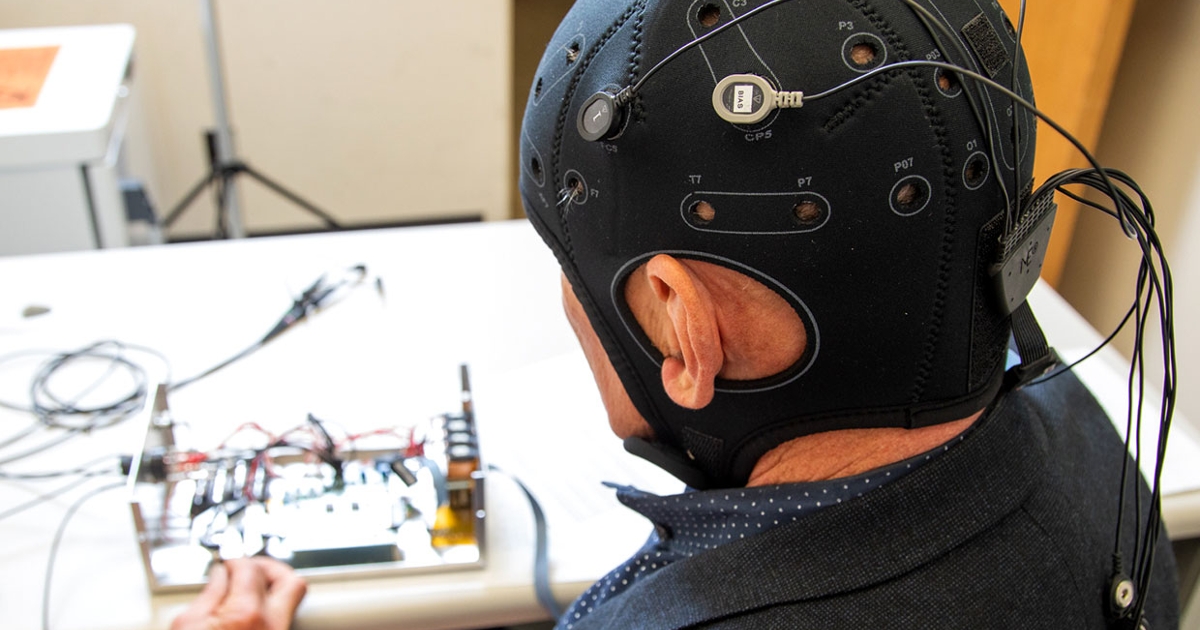To avoid that noise, scientists wait seconds or minutes after delivering a stimulus for its signal to dissipate, then measure brain activity via EEG. So the actual stimulation occurs blindly, without knowledge of how the brain is immediately responding to it.
Now, a new device under development by Stanford University and the Department of Energy’s SLAC National Accelerator Laboratory could allow researchers to simultaneously deliver electrical pulses and listen to the brain’s quiet response.
“This gives us a chance in real time to see what the brain is doing,” says SLAC senior scientist Christopher Kenney. “To have some quantitative, real-time feedback is really critical to the field.”
The project is a unique collaboration between Stanford psychologist and professor Anthony Norcia, who is interested in using neurostimulation to treat vision disorders, and a pair of SLAC particle physicists: Kenney and Martin Breidenbach, a professor of particle physics and astrophysics.
Norcia wanted to know if it was possible to quickly record the brain’s response after visual stimulation without huge artifacts. Kenney and Breidenbach said sure, they’d try it, and the team built a proof-of-concept device out of commercial, off-the-shelf parts.
That first “simple demonstration circuit,” says Breidenbach, showed that it is possible to use the same electrodes that deliver an electric current during neurostimulation to also pick up the weaker signals from inside the head. So far, the prototype has been tested on two people (one of whom was Breidenbach).
Now they are developing Version 2.0, which will be made up of 10 or 11 electrodes, engineered for alternating current stimulation, that are slightly larger than standard EEG electrodes and will include eight recording channels (the first version had only one). The electrodes are contained in a cap placed over the subject’s head, and the whole thing is connected to a battery and small circuit board in a computer via an optical cable.
“This one should be useful for a lot of genuine work,” says Breidenbach.
Still, he notes, the cap devices are hopefully just an intermediate step. In the long term, the group would like to engineer the whole device onto a custom integrated circuit that could be implanted into the skull.
“Then, folks could be able to walk around with a device that, in principle, can record what’s going on and tailor stimulation” to treat or prevent illness, such as epilepsy or depression, adds Breidenbach.
